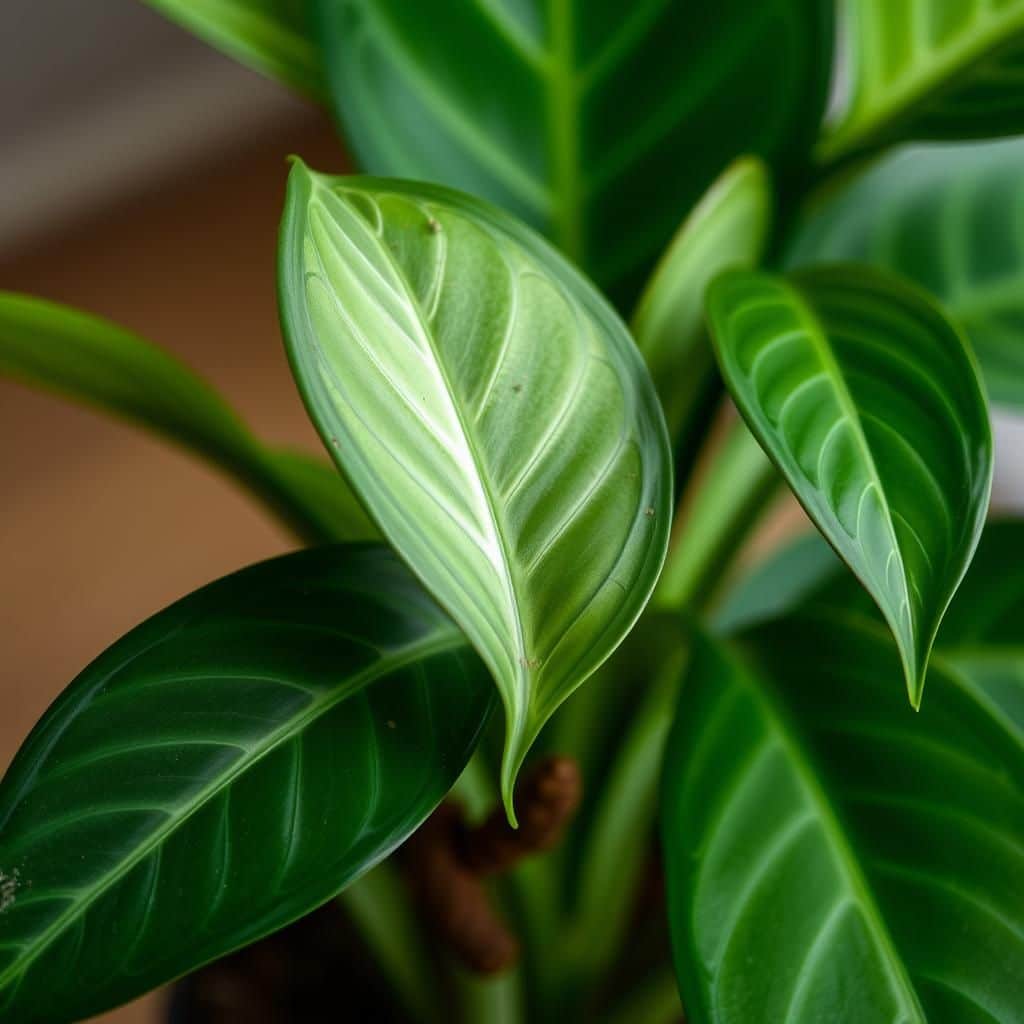Ultimate Guide on How to Propagate a Rubber Plant: Tips and Techniques for Success

Rubber plants, known for their lush green leaves and impressive height, are a popular choice among indoor gardeners. Propagating these beautiful plants can be a rewarding experience, allowing you to expand your collection or share with friends. In this ultimate guide, we will explore various techniques and tips to successfully propagate a rubber plant, ensuring that each new cutting thrives and grows into a healthy specimen. From understanding the best methods to choosing the right conditions, this comprehensive resource will equip you with the knowledge needed to master rubber plant propagation with confidence.
How to Successfully Propagate a Rubber Plant
Propagating a rubber plant (Ficus elastica) can be a rewarding endeavor for plant enthusiasts, as this resilient houseplant is known for its striking foliage and growth habit. The most common method of propagation is through stem cuttings, which involves taking a healthy cutting from the parent plant and allowing it to root in water or soil. For optimal results, select a cutting that has at least one or two leaf nodes, as this is where roots will develop. Ensure that the cutting is taken from a healthy part of the plant, and consider using a sharp, clean knife to make a clean cut. If starting in water, place the cutting in a container with enough water to cover the nodes but not the leaves, and change the water regularly to prevent rot. After a few weeks, once you see roots forming, you can transfer the cutting into potting soil to encourage further growth.
Choosing the Right Cutting
When considering the propagation of a rubber plant, it’s crucial to select the right cutting for the best chances of success. Ideally, choose a stem that is at least 6 inches long and has several leaf nodes. Cut at a 45-degree angle just below a node to maximize the area for root development. Make sure the cutting is healthy, free of any signs of disease or pests, and vigor is indicated by its bright green leaves. This careful selection process lays the foundation for a thriving new plant.
Rooting in Water vs. Soil
Both water and soil are viable options for rooting your rubber plant cuttings, but each method has its advantages. Rooting in water allows you to easily monitor the progress of root development, as you can visibly see the roots grow within a few weeks. Conversely, rooting in soil can help the cutting acclimatize to its eventual growing conditions from the beginning, reducing transplant shock. Regardless of the method chosen, always ensure the cutting has access to humidity and indirect light to promote healthy growth.
Creating the Ideal Environment
To encourage successful rooting, the environment must be conducive to the growth of your cutting. Keeping the cutting in a warm location with indirect sunlight helps mimic its natural habitat. High humidity can also be beneficial, so consider covering the cutting with a plastic bag or placing it in a propagator to retain moisture. Additionally, using a well-draining potting mix when rooting in soil is essential to prevent waterlogging and subsequent rot, ensuring that the roots can develop effectively.
See also:
Transplanting Your New Rubber Plant
Once your rubber plant cutting has developed a sufficient root system, typically a few inches long, it's time to transplant it into a pot with potting soil. Choose a container that is slightly larger than the cutting’s roots, and ensure it has drainage holes to prevent excess water accumulation. When transplanting, handle the roots gently and press the soil around them to eliminate air pockets. Water the plant thoroughly after transplanting and place it in a warm area with indirect light while it adjusts to its new home.
Care After Propagation
After successfully propagating and transplanting your rubber plant, proper care is key to its growth. Continue to provide indirect sunlight and maintain consistent moisture in the soil, but avoid overwatering. Fertilizing the plant every few weeks with a diluted houseplant fertilizer can also promote healthy growth during its establishment phase. Monitoring for pests and ensuring proper airflow around your rubber plant will further support its health and longevity as it matures.
| Step | Description |
|---|---|
| Select Cutting | Choose a healthy stem cutting with leaf nodes. |
| Rooting Method | Decide between water or soil for rooting. |
| Create Environment | Provide warmth and humidity for the cutting. |
| Transplant | Move the rooted cutting to potting soil after rooting. |
| Ongoing Care | Maintain proper light, water, and nutrients. |
Understanding the Rubber Plant's Growth Habits for Successful Propagation
To effectively propagate a rubber plant, it is crucial to understand its growth habits and natural environment. These plants thrive in tropical and subtropical regions, which influences their rooting and growth patterns. When propagating, keep in mind that they prefer a warm and humid environment; ensuring the right conditions can significantly enhance your success rate. Additionally, selecting the right time of year, typically spring or summer, when the plant is actively growing, can improve the likelihood of prosperous propagation, as the plant will be in the best phase to develop new roots and shoots.
Best Techniques for Cutting Rubber Plants
Using the right cutting techniques is essential when propagating rubber plants. Take a cutting that is at least 6 inches long, with several leaves and a healthy node. Make the cut just below a node at a 45-degree angle to maximize surface area for rooting. After cutting, remove the lower leaves to prevent rot when placed in water or soil. Using a sterilized tool minimizes the risk of disease transmission, promoting healthier growth for the new plant.
Ideal Conditions for Rooting Rubber Plant Cuttings
Rubber plant cuttings require specific conditions to root successfully. The ideal temperature for rooting is around 70-80°F (21-27°C), with substantial humidity to encourage the development of new roots. A humidity dome or a plastic bag can help maintain humidity levels. Additionally, ensure the soil is well-draining yet retains adequate moisture to prevent the cuttings from drying out. Proper lighting is also crucial; place cuttings in bright, indirect light to avoid scorching while still promoting growth.
See also:
Signs Your Rubber Plant Cutting Has Rooted
Recognizing when a rubber plant cutting has successfully rooted is key to ensuring its transition to independent growth. Look for signs like new leaf growth emerging from the top, indicating that the plant is establishing itself. Gently tugging on the cutting can also provide feedback; if you feel resistance, it is likely that new roots have formed in the substrate. Additionally, a healthy green color of the cutting suggests it is thriving; it may also take anywhere from a few weeks to a couple of months before full rooting is achieved.
Common Problems in Rubber Plant Propagation and Solutions
During the propagation of rubber plants, certain problems may arise, including overwatering, which can lead to root rot. To avoid this, ensure your cuttings are placed in well-draining soil and have proper air circulation. Pests like mealybugs or spider mites can also be an issue; regularly inspect the cuttings and treat any infestations promptly with an appropriate insecticide or natural remedy. Lastly, insufficient light can cause growth issues; ensuring the cuttings receive adequate indirect sunlight will help mitigate these challenges.
Tools and Supplies Needed for Successful Propagation
Having the right tools and supplies on hand can significantly enhance the success of rubber plant propagation. Essential items include a sharp, sterilized knife for clean cuts, pots with proper drainage holes, and a quality potting mix designed for tropical plants. Additionally, rooting hormone can be applied to the cut ends to encourage the development of roots. Lastly, consider using a humidity dome or plastic bag to create an optimal environment for your cuttings, fostering their growth and health.
Questions from Our Readers
What are the best methods for propagating a rubber plant?
To propagate a rubber plant, you can use stem cuttings or leaf cuttings. For stem cuttings, select a healthy stem and cut it below a node, then place it in water or soil. For leaf cuttings, ensure you cut a leaf with a part of the stem attached and follow a similar process. Both methods benefit from warmth and humidity to encourage root growth.
How long does it take for rubber plant cuttings to root?
The time it takes for rubber plant cuttings to root can vary, but generally, you can expect roots to develop in 4 to 6 weeks. During this time, ensure that the cuttings are kept in a warm, well-lit area, and maintain moisture without overwatering to foster healthy root development.
See also:
What type of soil is best for propagating a rubber plant?
When propagating a rubber plant, it's best to use a well-draining potting mix. A mixture of peat, perlite, and pine bark works well to provide the necessary drainage and aeration. This environment prevents excess moisture, which can lead to root rot, while still retaining enough moisture for the cuttings to thrive.
Should I use rooting hormone for propagating rubber plants?
Using rooting hormone is optional but can be beneficial when propagating rubber plants. Applying rooting hormone to the cut ends of the stem or leaf cuttings can promote faster root development and increase the chances of successful propagation. However, many gardeners have had success without it.

If you want to read more articles like Ultimate Guide on How to Propagate a Rubber Plant: Tips and Techniques for Success, we recommend you check out our Gardeners category.
Leave a Reply
Related Articles